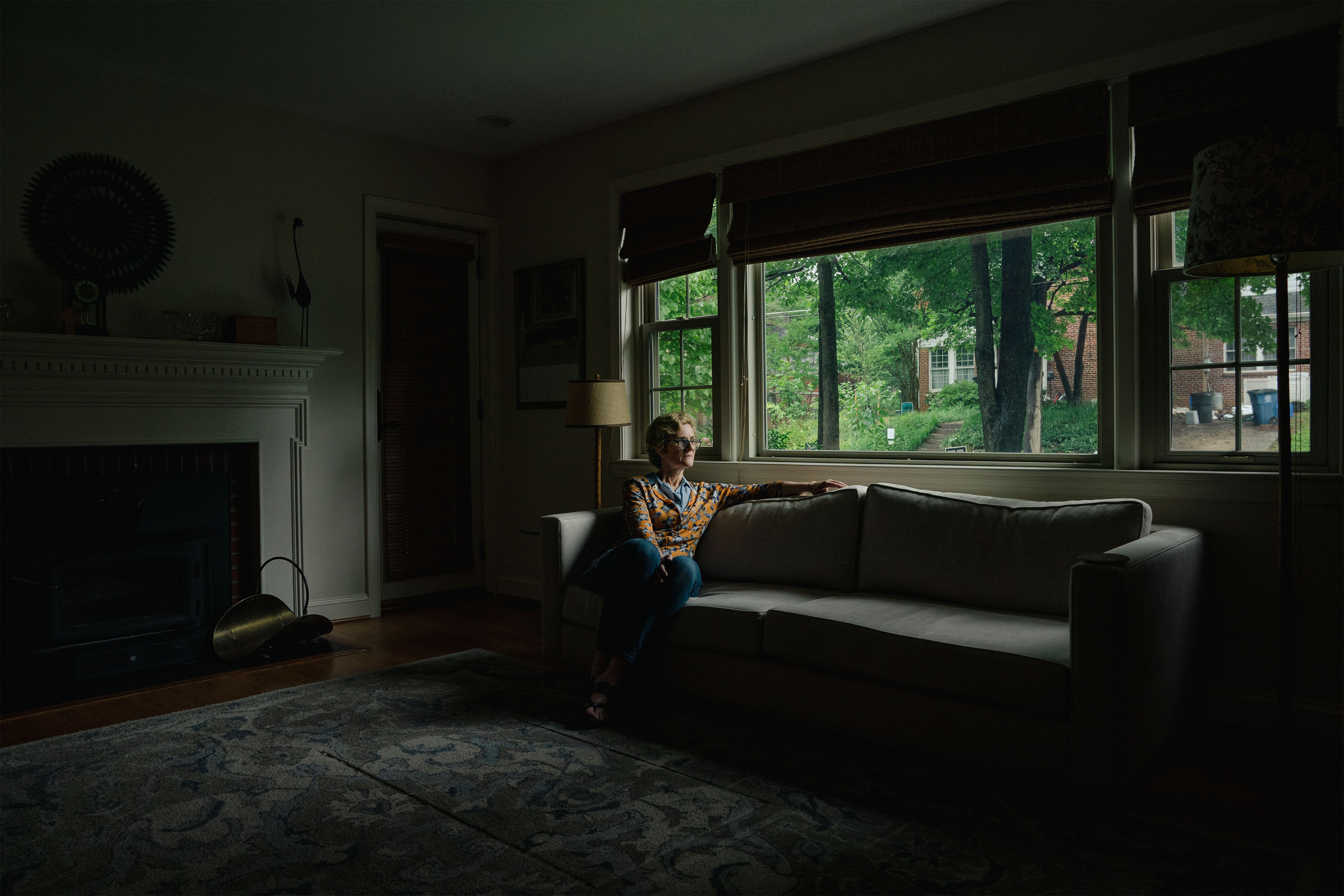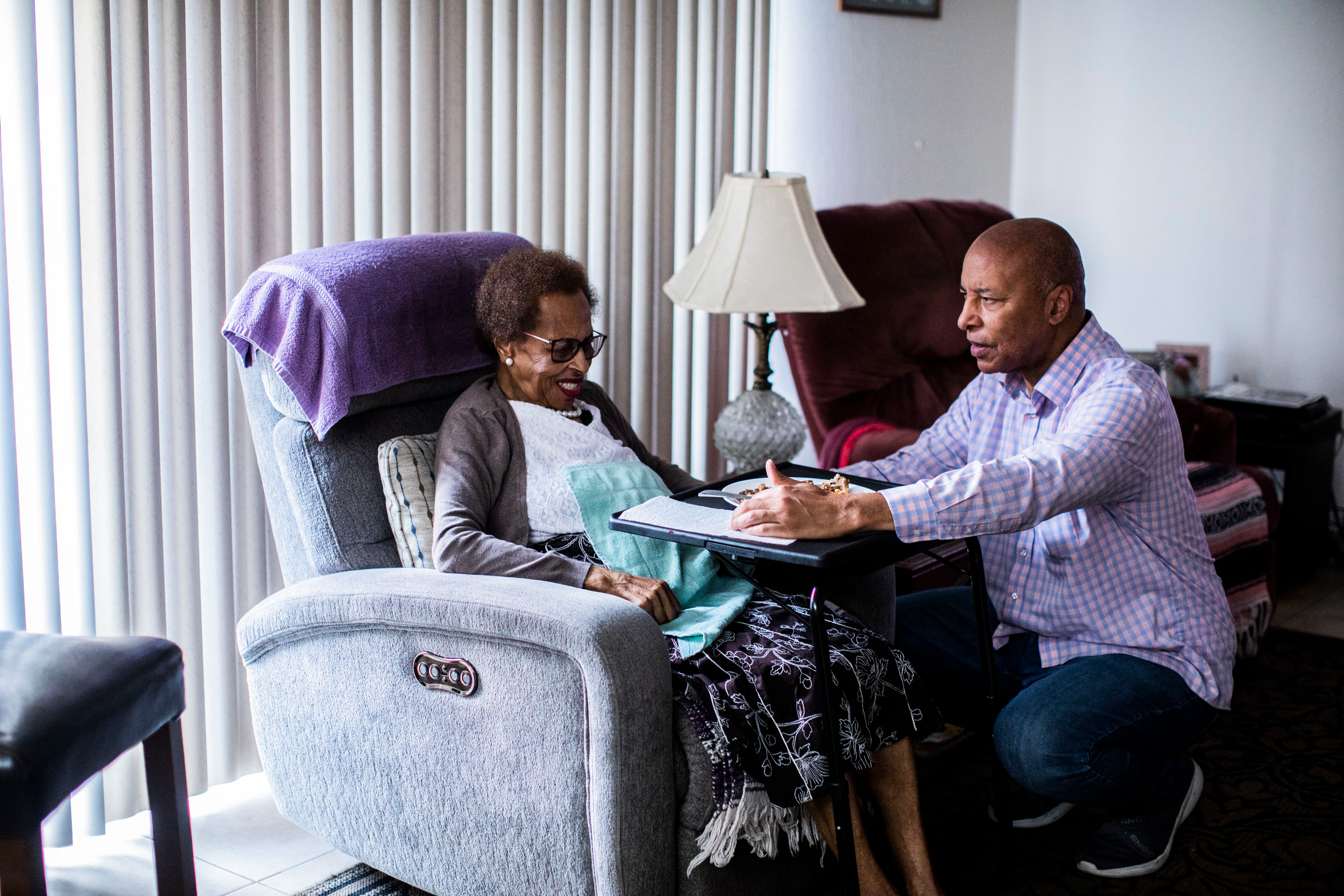Why Long-Term Care Insurance Falls Short for So Many
For 35 years, Angela Jemmott and her five brothers paid premiums on a long-term care insurance policy for their 91-year-old mother. But the policy does not cover home health aides whose assistance allows her to stay in her Sacramento, California, bungalow, near the friends and neighbors she loves. Her family pays $4,000 a month for that.
“We want her to stay in her house,” Jemmott said. “That’s what’s probably keeping her alive, because she’s in her element, not in a strange place.”
The private insurance market has proved wildly inadequate in providing financial security for most of the millions of older Americans who might need home health aides, assisted living, or other types of assistance with daily living.
For decades, the industry severely underestimated how many policyholders would use their coverage, how long they would live, and how much their care would cost.
And as Jemmott belatedly discovered, the older generation of plans — those from the 1980s — often covered only nursing homes.
Only 3% to 4% of Americans 50 and older pay for a long-term care policy, according to LIMRA, an insurance marketing and research association. That stands in stark contrast to federal estimates that 70% of people 65 and older will need critical services before they die.
Repeated government efforts to create a functioning market for long-term care insurance — or to provide public alternatives — have never taken hold. Today, most insurers have stopped selling stand-alone long-term care policies: The ones that still exist are too expensive for most people. And they have become less affordable each year, with insurers raising premiums higher and higher. Many policyholders face painful choices to pay more, pare benefits, or drop coverage altogether.
“It’s a giant bait-and-switch,” said Laura Lunceford, 69, of Sandy, Utah, whose annual premium with her husband leaped to more than $5,700 in 2019 from less than $3,800. Her stomach knots up a couple of months before the next premium is due, as she fears another spike. “They had a business model that just wasn’t sustainable from the get-go,” she said. “Why they didn’t know that is beyond me, but now we’re getting punished for their lack of foresight.”

The glaring gaps in access to coverage persist despite steady increases in overall payouts. Last year, insurers paid more than $13 billion to cover 345,000 long-term care claims, according to industry figures. Many policyholders and their relatives reported that their plans helped them avert financial catastrophes when they faced long-term care costs that would have otherwise eviscerated their savings.
But others have been startled to learn that policies they paid into over decades will not fully cover the escalating present-day costs of home health aides, assisted living facilities, or nursing homes. And in other cases, people entitled to benefits confront lengthy response times to coverage requests or outright denials, according to records kept by the National Association of Insurance Commissioners, the organization of state regulators.
Jesse Slome, executive director of the American Association for Long-Term Care Insurance, an industry trade group, said long-term care was the most challenging type of insurance to manage. “You need multiple crystal balls,” Slome said. “And you have to look 20 years into the future and be right.”
The Pandemic Paused a Long-Term Decline
The industry’s wobbly finances haven’t steadied despite a brief profitable surge during the coronavirus pandemic. Earnings rose because thousands of people who were drawing benefits, many in nursing homes or assisted living facilities, died from covid-19, and other policyholders died before using their insurance. Others stopped tapping their benefits because they fled facilities and went to live with their families, who provided unpaid care.
Overall, earnings went from $2.3 billion in losses in 2019 to two years of profits totaling $1.1 billion, before receding into the red in 2022 by losing $304 million, according to Fitch Ratings.
Still, none of that was enough to reverse the industry’s long-term decline. Doug Baker, a director in Fitch’s U.S. life insurance group, said long-term care insurance “is one of the riskiest in our universe” because of the lingering financial burden from underestimating the number of people who would tap their policies.
More insurers now offer hybrid plans that combine life insurance with long-term care. Those policies are less generous than the ones offered a decade ago — and using the long-term care benefit drains some or all of the money policyholders hoped to leave to their heirs.
“I don’t think people will offer unlimited again,” said Tom McInerney, the chief executive of Genworth Financial, which suspended selling plans through brokers in 2019. “One way or another, taxpayers are going to have to pay more for long-term care needs of the baby boomers.”
Many experts believe it’s untenable to expect that a private insurance market can protect most people from the growing burden of long-term care costs.
“The whole situation is poorly suited to that kind of insurance offering,” said Robert Saldin, a political science professor at the University of Montana who studies the industry.
Falling Profits and Skyrocketing Premiums

Starting in the 1970s, long-term care insurance was touted as a way to keep older people from eroding their retirement savings or resorting to Medicaid, the state-federal program for the poor and disabled. Early plans were limited to nursing home care but later expanded to cover in-home care and assisted living centers. Sales of the policies doubled from 1990 to 2002.
As demand grew, however, there were signs the industry had vastly miscalculated the cost of its products. Insurers set early policy prices competitively low, based on actuarial models that turned out to be markedly inaccurate. Forecasters’ estimates of policyholders’ longevity were wrong. U.S. life expectancy increased to nearly 77 years in 2000 from about 68 years in 1950, federal records show. And as people lived longer, their need for care increased.
Industry officials also failed to account for the behavior of savvy consumers determined to keep their long-term care coverage. Insurers counted on policy lapse rates — people giving up their policies or defaulting on payments — of about 4% annually. The actual lapse rate was closer to 1%.
As the miscalculations sent profits plummeting, insurers raised premiums or exited the market. By 2020, sales of traditional policies had dropped to 49,000 and the number of carriers offering plans had fallen to fewer than a dozen from more than 100.
Premiums for some consumers doubled in just a year or two. Three class-action lawsuits accused Genworth of failing to disclose to policyholders that it had planned multiyear rate increases, leaving them without information they needed to decide whether to keep their policies. Genworth settled the lawsuits with offers to allow customers to adjust their policies, and in some cases it paid cash damage to those who accepted reduced benefits. The company did not admit wrongdoing.
The increases continue. AM Best, a rating agency, said in a report last November that Genworth “will continue to need annual rate increases for at least several more years to reach economic break-even.”
Prices for new policies have jumped, too. A decade ago, a couple aged 55 could expect to pay about $3,725 a year for a policy that included $162,000 in total benefits and 3% annual inflation protection, according to the American Association for Long-Term Care Insurance. Today, a policy that is virtually the same would cost $5,025, 35% more, even as rising health costs and inflation have eroded the value of the benefits.
And that’s only for the people who can qualify. To limit their losses, insurers have narrowed the eligible pool of clients. In 2021, about 30% of applicants ages 60 to 64 were denied long-term care insurance. For applicants 70 to 74, the rejection rate was 47%. Even among people in their 50s, more than 1 in 5 were turned down. Chronic health conditions, a history of stroke or diabetes, or psychiatric illness may all be grounds for disqualification.
At the same time, insurers began scrutinizing claims more closely. “They tightened their belts,” said Alan Kassan, a senior partner with the California law firm Kantor & Kantor, which represents clients challenging denials. “Then they tightened their claim administration and started denying claims more and more.”
In 2022, the proportion of traditional long-term care claim denials varied, from 4.5% in Rhode Island to 9.6% in Alaska, according to the National Association of Insurance Commissioners.
Despite efforts to limit liability, financial problems forced several high-profile insurance providers to drastically revise policy terms and premiums or go into insolvency, affecting the investments of thousands of clients.
They included Alice Kempski, a retired nurse who, after her husband died, bought a policy from the insurance company Penn Treaty and American Network in 2004 on the advice of a financial adviser, paying premiums of $180 a month for 16 years. By 2017, she was hobbled by osteoporosis and was struggling to manage her multiple medications, according to her daughter, Ann Kempski. She sold the family home in Wilmington, Delaware, in 2017 and, now needing help bathing, moved to an assisted living center there. But when the family tried to file a claim, they discovered that Penn Treaty was insolvent and the policy had been taken over by the Pennsylvania state insurance guaranty fund.
The fund had frozen Kempski’s benefits and increased her premiums to about $280 a month, her daughter said. Her doctor told Penn that she had “mild dementia” and osteoporosis and should be in an assisted living facility. But the insurer said that there was not enough evidence that she needed help with two daily living activities or had severe cognitive impairment, conditions that would trigger coverage, according to correspondence between Kempski and the company.
Kempski was paying roughly $5,400 a month out-of-pocket to the assisted living center. She moved in with her daughter when the pandemic hit, but she continued to pay full rent to the facility to save her spot until she returned in 2021. In March of that year, when her daughter was preparing to refile a claim for long-term care insurance and her premiums had reached $320 a month, Kempski had a massive stroke. She died the next month. The insurer never paid for any of her care.
Coverage in a Facility but Not at Home

The policy held by Angela Jemmott’s mother, Jewell Thomas, went unused for a different reason: Like many older policies, it covered only skilled nursing care in a facility. Her children had purchased the policy after Thomas’ husband died at 56.
But decades later, once Thomas developed dementia in her 80s, her children realized how desperately their mother wanted to stay home. Jemmott said they tried to add a rider to the policy to cover home care but were told that their mother’s age (older than 75) barred add-ons. Now the siblings jointly pay about $4,000 a month for two home health aides, while still paying the insurance premium of more than $2,500 a year. “We feel like if we stop paying it, another unforeseen need will arise and cause us to wish we kept it,” Jemmott said.
Not all policyholders are displeased.
Bert Minushkin, of Royal Palm Beach, Florida, paid monthly premiums for 27 years, beginning in 1993 when the policy was offered as a benefit by Westinghouse Electric Corp., where he worked as a nuclear engineer. Over time, he paid about $120,000 toward the policy, said his daughter Lisa Heffley, 61, of Louisville, Kentucky.
Diagnosed with dementia, Minushkin began declining swiftly in 2019. His wife spent $220,000 on assisted living facilities and private aides for him over three years, with about $90,000 of the cost offset by his policy, Heffley said. He died in February 2022 at age 91.
“He didn’t break even, but thank God he had it,” she said.
Turning to Crowdfunding

Many experts say what’s needed is a government-subsidized or public program that requires people to carry long-term care insurance, as the Netherlands and Singapore have. But federal efforts to create such a system, including the CLASS Act, which was repealed in 2013, and the WISH Act, introduced in 2021, have failed to gain traction in Congress. At the state level, Washington this summer started a first-in-the-nation program that will provide long-term care benefits for residents who pay into a fund, but it is voluntary, and the maximum benefit of $36,500 will not cover a year in most assisted living facilities.
Lack of a safety net leaves some people unprotected, like Jeffrey Tanck, a real estate broker in Washington, D.C. In 2021, his mother, Sue Tanck, at 75, suffered a serious fall, leaving her with broken arms and a traumatic brain injury. She had been the primary caretaker for his father, Roger, then 77, who had rapidly worsening dementia.
Without warning, Jeffrey Tanck had to assume charge of his father’s care, moving him into an assisted living center in Ocala, Florida, that now charges $4,600 a month, and had to get his mother into a skilled nursing facility paid for by Medicaid. With no money to cover his father’s costs until he sold their house, Tanck resorted to a plea on the crowdfunding site GoFundMe.
Wanting to shield himself from a similar financial crisis somewhere down the road, Tanck, who is 51, applied for long-term care insurance, only to be denied. The reason? He takes antidepressants, which help him cope with the anxiety and stress of caring for his parents.
“What are people supposed to do?” Tanck asked. “I’m going to need something.”
KFF Health News is a national newsroom that produces in-depth journalism about health issues and is one of the core operating programs at KFF—an independent source of health policy research, polling, and journalism. Learn more about KFF.
USE OUR CONTENT
This story can be republished for free (details).
from Insurance Archives - KFF Health News https://ift.tt/0HXcNm6
No comments